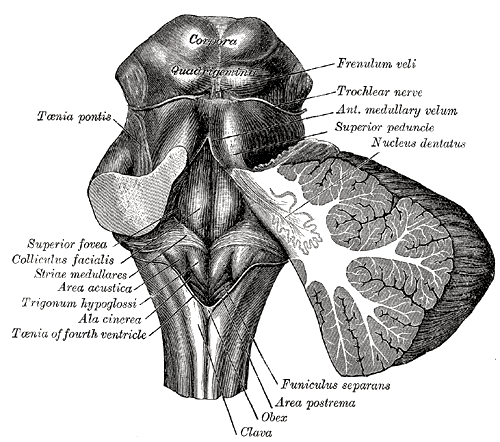Vagal trigone
Editor-In-Chief: C. Michael Gibson, M.S., M.D. [1]
The cells of the dorsal nucleus are spindle-shaped, like those of the posterior column of the spinal cord, and the nucleus is usually considered as representing the base of the posterior column. It measures about 2 cm. in length, and in the lower, closed part of the medulla oblongata is situated behind the hypoglossal nucleus; whereas in the upper, open part it lies lateral to that nucleus, and corresponds to an eminence, named the vagal trigone (ala cinerea), in the rhomboid fossa.
Additional images
-
Rhomboid fossa.
External links
